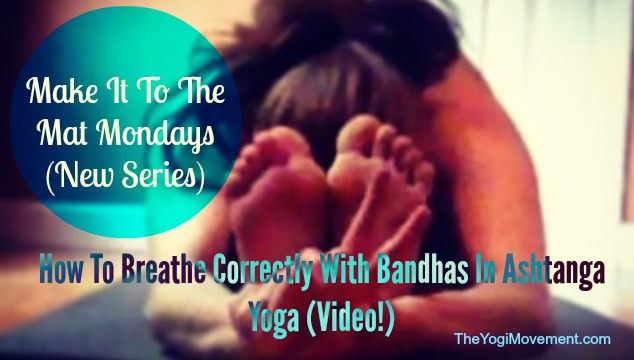Ashtanga Yoga sometimes gets a bad reputation for being so physical, but if you’re practicing Ashtanga Yoga with the correct foundations and intentions, the practice becomes a completely internal experience. Just because someone can put their leg behind their head, or float up into a handstand doesn’t mean that one is further along in the practice. From a completely physical and surface level approach, it looks that way, but the practice isn’t about the posture at all.
If It’s Not About The Posture, Why do we do a set series of postures?
I’m SO glad you asked! The purpose of doing these postures over and over again is to observe. To breathe through each posture everyday, no matter how difficult or easy, you start to understand sensations, feelings, and patterns in the mind. You might tell yourself to skip or add postures, and the reason you don’t do that is because then you just give into your own ego. When you skip or add, you just end up enhancing your preferences. The practice becomes a mirror. As you continue this daily, you become stronger and more disciplined in concentration, and you start to allow rather than force. Even though you do the same practice everyday, there is incredible internal change that comes with it. Does that answer your question?
Why am I working towards all of these advanced postures if that doesn’t mean I am getting further in the practice?
Another GREAT question! All of these postures exist to accommodate the skill level of the practitioner. The real work happens when a posture challenges you, whether it’s an advanced posture or not.. You will learn a lot about how you react in these situations. Do you become humble during difficult postures? Do you become frustrated, angry, jealous? If I was easily working through each posture, and then I get to fourth series and hit a wall with a posture, that’s where the work is. Don’t get me wrong, it’s all work. It’s all meditation. It’s all practice. However, if I struggle in the primary series, and your struggles begin in fourth series, it makes no difference. All that means is your skill level is in a difference spot, but internally, it’s all relative.
There are a few foundations that work together to create this moving meditation in the practice:
Breath: Deep Breathing in and out through the nose with sound. The sound comes from the back of the throat. The breath is moving from within the pelvic floor all the way up through the chest into the crown chakra. The nose is a vessel to move the breath back and forth. Every breath should be counted, and never be held.
Bandhas: Energy locks in the body. These are engaged to help move the prana and heat that you’re creating with your breath through the body to cleanse and detox the nadis (nerve endings) and clear the chakras.
I talk about Mula Bandha, Uddiyana Bandha, and Jaladhara Bandha in the video. Jalandhara is naturally done if you’re breathing correctly by slightly constricting the throat muscles. Mula Bandha (read my fun post about it here) is the root lock, and grasped on the exhale. It actually happens naturally at the end of the exhale. Put your awareness at the perineum (between the public bone & base of the spine), grasp Mula Bandha, and then inhale utilizing Uddiyana Bandha by pulling the naval to the spine and bringing the breath upward. Always keep the belly pulled in, and create space by elongating the spine as you breathe. It’s tricky, but you’ll get the hang of it. Be patient.
Drishti : I don’t get into this in the video, but the drishti is the gaze for each posture. It’s the asana of the eyes. Having a set place to look for each posture is another way to create a one pointed concentration, which will lead to meditation. We’ll discuss more soon!
Watch the video & Breathe with me! Contact me for any questions!


Thank you for your inspiring guidance.
Thank you for reading!
I love this Monica! I’m actually working on an article on this very topic from a different angle, and I’m going to cite to your article for a different perspective on the topic. Well written and a good resource for students looking to understand the “why” of the practice.
Thanks for reading! I look forward to read your post as well & love connecting over the blogosphere 🙂
I love connecting on the blogosphere too! My article comes off a lot angrier than yours, cuz that’s just how I was feeling. I think it was cathartic for me to write it and get it off my chest. Also its sometimes fun to write with that kind of tone just to get people talking. But all I’ve heard so far is crickets…lol
Is it alright to try and breath daily using my mula bandha? or should I just focus on it during my yoga practice? Thank you!